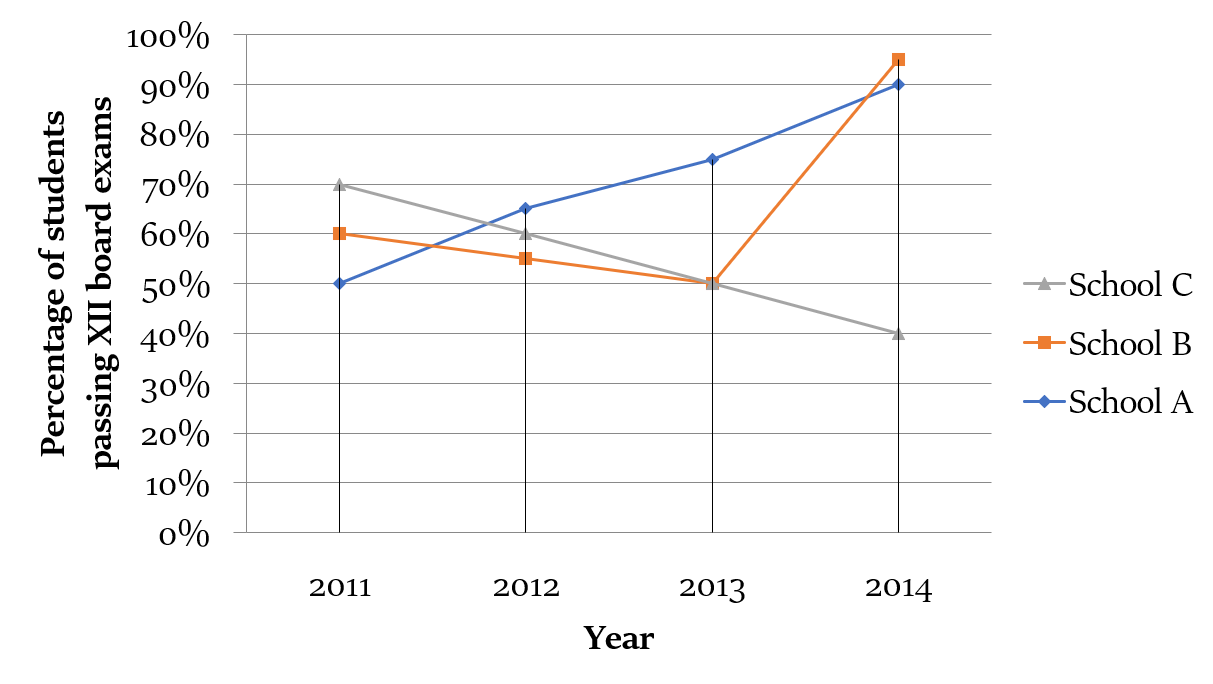Basic Approach to Data Interpretation
Significance of DI
Chart, as we all know, is a visually appealing representation of data.
It’s not only cognitively soothing but also allows quicker decision making. It’s more so relevant if one is aspiring to make a successful career in the financial field (vis-à-vis banking, insurance etc.), management or administration, wherein one is supposed to tackle a huge chunk of data on a continuous basis and make inferences out of it.
Decision making involves drawing out relevant information from the represented data. Hence, all the premier competitive examinations try to evaluate the candidates on this parameter.
Once commanded, it will provide one an edge over other fellow aspirants. Generally, most of the times DI sets may be cracked sooner than other quantitative questions.
Unlike Quant and English, this section has no particular syllabus. It has minimal theory, but demands more practice. Let us get acquainted with the types of data representation first of all.
Types of data representation
There are four basic graph types and tables that we will tackle often in Aptitude examinations:
- Line chart
- Bar graph
- Pie chart
- Data table
We will tackle them one by one, in subsequent articles.
Moreover, questions are often framed wherein we are supposed to compare two or more graphs and draw conclusions. To acquaint yourself better with DI, you should have an eye on the various graphs and charts you come across in newspapers, various reports etc. Try to extract information out of them, find the connections between various charts represented etc.
Hone those calculative brain muscles
The nature of DI questions may vary a lot across different Aptitude examinations.
For example, in CAT many DI sets are more analytical and logic based, but a few calculation-based DI sets are also included in the exam. While, DI in banking entrance exams is calculation intensive (mostly percentage, ratio based).
Hence, inculcate a habit of calculating without the use of calculator. When we talk about calculations with respect to DI sets, it’s more of a game of approximations and comparisons and less about enhancing accurate calculation speed. Remember, our goal is to eliminate the wrong options or recognize the right one and not to find the exact value of the answer.
While comparing, one should be aware that drawing comparisons may only be possible in the presence of some common base. For example, have a look at the graph given below:

In the graph given above, in which year do you think the number of students passing showed the most improvement over the previous year?
We cannot answer this question, as the number of students enrolled in class XII of the school in different years is not known, e.g. in year 2011 there may be 100 students studying in class XII of which 50 passed, while in 2014 there may be only 10 students studying in the class, of which 9 passed.
DI sets may be based on 2-digit numbers, on 3 digit numbers or even more. In general, we can predict the difficulty level and the amount of the calculation involved by just looking at a particular DI set.
Practice makes a man perfect
After becoming comfortable with calculations and DI set types, one should start practicing various DI sets from actual papers and test series papers (especially those conducted on the all-India level). They contain better DI sets than any of the book available in the market.
More scientific method will be to do similar sets together. For example, you may club together DI sets on the basis of representation of data (i.e. line charts, pie chart, bar graph, data table based DI sets).
DI sets based on two or more graphs may be clubbed together and solved separately.
Focus on the accuracy and understanding while practicing and on speed during the test series.